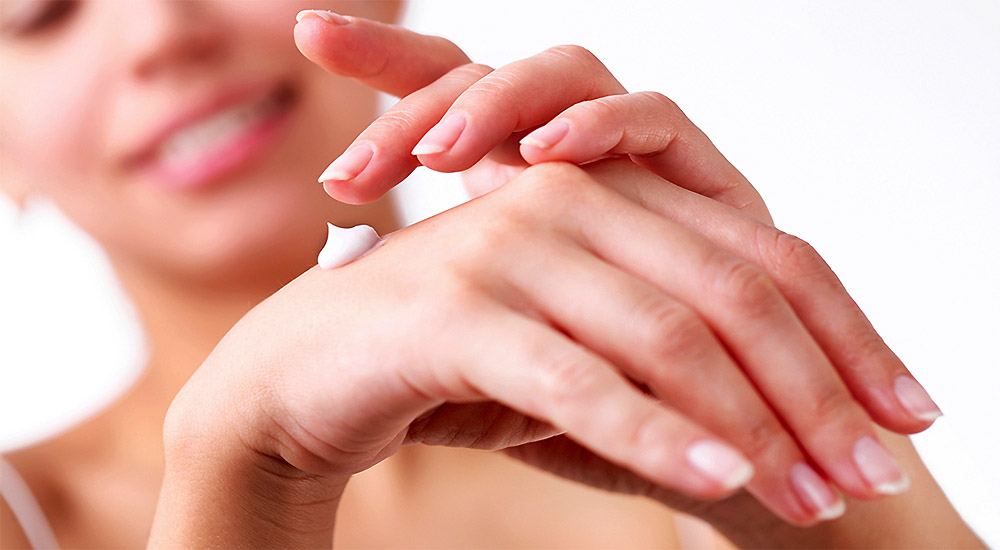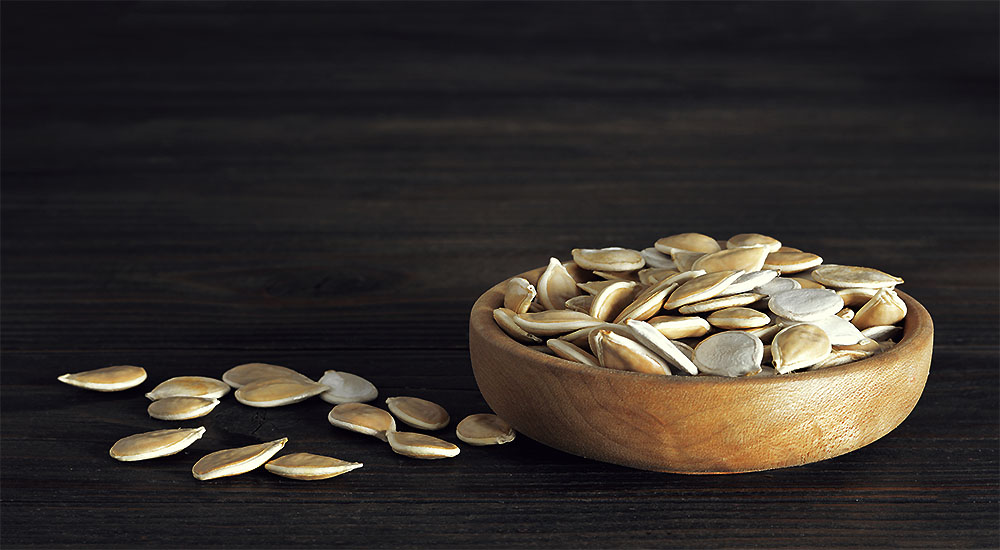Should You Avoid Topical Gluten?

Must you avoid topical gluten?
Will it create a health problem if your body lotion contains gluten? What about toothpaste or lipstick – are those hazardous for those avoiding gluten in their diet?
Fortunately, the answer is “no” mostly, but since there are instances where it’s “yes”, let’s delineate those the issues may be.
What’s your largest organ? Your skin!
The skin is not only your largest organ, but its health is reflected in the health of the gut or the intestines. Doctors practicing Functional Medicine or Root Cause Medicine always look to the gut when diagnosing the underlying cause of any skin malfunction, including dry skin, rashes, acne, psoriasis, eczema, or DH, the abbreviation for Dermatitis Herpetiformis – the skin condition associated with celiac disease.
Will the topical application of gluten affect your gut health?
Gluten is a very large protein, making it not only impossible to be truly digested by any human, but also creating an unlikely scenario for it to be absorbed through the skin. Why are we discussing this? Read on, please.
HOWEVER, if your skin is damaged with breaks or lesions, it is believed gluten can pass into the body’s bloodstream through the damaged area of the skin.
Another source of trouble is unintentional gluten ingestion via topical application.
Toothpaste or mouthwash must be gluten-free because it’s impossible to not swallow some. As I often say, gluten ingestion is a qualitative, not a quantitative issue, therefore any gluten ingestion is too much. Note: please avoid mouthwashes with alcohol; there is a known cancer link.
Shampoos and conditioners are predominantly safe provided you’re not someone who “chews” on your hair. And of course, shampoos and conditioners are rinsed out making contamination quite minimal, but what about styling products that remain on the hair? Even touching your hair often can get residues on your hands that can ultimately make its way to your mouth.
The largest concern with topical gluten is hand and body cream. It’s applied to the skin but unless you remember to wash your hands thoroughly, defeating the purpose of hand cream, when you later eat a piece of fruit or other “finger food”, your fingers can cause gluten exposure.
The big question is, could you possibly get enough gluten from such exposure to cause an immune response and thereby endanger your health?
Most would have guessed no, but researchers out of George Washington University reported on a celiac patient who presented with stomach pain and a rash later discovered to be DH, the skin condition associated with celiac. The patient was not irresponsible on her diet, in fact, she was quite diligent and strict with her gluten-free lifestyle. However, her body lotion did contain gluten, and, once discontinued, her symptoms disappeared.
The above is not a “once in a million” occurrence. Here at Root Cause Medical, we have come across a number of patients who apparently react to topical gluten. Topical gluten as a source of trouble is too often dismissed by traditional doctors. It may not be common but it happens enough that being aware of it is necessary to prevent condemning those suffering to an unnecessary lifetime of poor health.
Have you reacted to topical gluten?
Once the researchers, Prakash and Borum, identified their patients as suffering from unintentional gluten ingestion, they became curious about gluten’s presence in beauty products. What they discovered is, unlike labels on food, such disclosures were very difficult to discern in non-food items. Below you’ll see why this is true. The doctors summarized their findings as follows: “gluten-containing cosmetics can inadvertently be obtained by the consumer and can result in an exacerbation of the celiac disease.” It’s certainly a warning well worth heading.
Their intention was to increase awareness of the problem of unintentional gluten ingestion while revealing the difficulty associated with unclear labeling. Their conclusions were, unfortunately, misinterpreted to mean gluten is always absorbed through the skin and thereby any and all topical gluten can result in ill health for those with celiac disease. Hopefully, we have helped to clear up the misunderstanding here.
In order for consumed gluten to be a problem, it must cause the immune system to react. What is the threshold? Our government has dictated that food products containing gluten at a level of 20 parts per million (ppm) is safe for those with celiac disease. Other countries maintain a safe level of 10 ppm as their allowed limit. They believe anything over 10 ppm creates health problems.
We have definitely encountered patients for whom the 20 parts per million (ppm) threshold is beyond what their immune system can tolerate. In fact, there are some acutely sensitive individuals for whom even 10 ppm is too much; fortunately, there are in the minority.
The chair from the University of Utah’s dermatology department, Dr. Zone, is an expert in DH and agrees with the potential liability associated with inadvertent ingestion of gluten from a topical source. He states: “Some people are very sensitive to small amounts of gluten, so I do think enough lotion could be ingested.”
Women do eat some lipstick
The biggest culprit in inadvertent gluten exposure may very well be lipstick; it’s a topical but we do ingest it to some degree. I’ve seen stories that women “eat” several pounds of lipstick during the course of their lifetime. It sounds excessive, but what is clear is women, or men using lip balms and the like, do ingest it internally to some degree. In those individuals who are highly sensitive, such contamination could result in an immune response. Men are likely at a lower risk but kissing can be a source of mutual exposure.
It’s been estimated an individual could “eat” 1 mg per day of gluten from a lip product. Fortunately, the “safe” threshold is ten times that, at 10 mg per day. That seems like a solid safety buffer providing the individual is not receiving contamination from multiple sources. Of course, there’s always the highly sensitive person to consider, for whom any amount of gluten can is problematic.
My recommendation: anyone suffering from a negative reaction to gluten should most definitely avoid any lip products containing gluten.
The Journal of the Academy of Nutrition and Dietetics published a study 2012: “Gluten in Cosmetics: Is there a reason for concern?” The researchers tested two lip balms, a lipstick, a lip gloss, and two lotions. Their conclusion – none of the products tested contained quantifiable gluten, with the definition of “quantifiable” as less than the 20 ppm.
They only used a small sample of products, but their results correspond with what we see with our patients. Topical gluten fortunately isn’t a problem for the majority, but that definitely does not mean it’s safe for everyone.
In order to safely avoid all gluten in cosmetic and body products, it would be best to familiarize yourself with the terms below. They’re big words and a bit unpronounceable but they do mean gluten or oats and if you’re someone with a skin condition or on the more sensitive end of the spectrum, it would behoove you to learn these, or at least put them in your phone somewhere. Oats, you may recall, are problematic due to their frequent cross-contamination with gluten. Gluten-free oats are available to eat but it is not common for oat-containing products of a topical nature to be gluten-free.
Below please find a list of ingredients containing that should be avoided in topical products:
• hydrolyzed wheat protein
• Triticum Vulgare (wheat germ) oil or extract
• Amp-Isostearoyl Hydrolysed Wheat Protein
• Disodium Wheatgermamido Peg-2
• Hydrolyzed Wheat Protein Pg-Propyl Silanetriol
• Hydroxypropyltrimonium Hydrolyzed Wheat Protein
As you can see, these overly long words do not easily roll off the tongue, but each does contain the word “wheat” – ultimately all you need to know.
Looking for “wheat” doesn’t always work however when companies use more scientific names for wheat in their ingredient list. As an example, Triticum aestivum – “triticum” is another name for cereal grasses, and wheat is found within that family. Awareness of the word “triticum” is useful when avoiding gluten. Below find such a list. As you can see “Triticum” is in every item listed.
• Triticum carthlicum – Persian wheat
• Triticum durum – durum- wheat’s cousin
• Triticum polonicum – Polish wheat
• Triticum spelta – spelt – cousin of wheat
• Triticum turanicum – kamut – cousin to wheat
• Triticum turgidum – durum wheat
• Triticum monococcum – Einkorn wheat
Knowing that wheat, rye, and barley all constitute gluten, reading “barley grass” on a label is easy to identify as an ingredient to avoid, but perhaps “Hordeum vulgare” would throw you for a loop. It would anyone, of course, but “Hordeum” is the protein found in barley, so that’s another keyword to add to your vocabulary.
The rye is known as “secale” cereal, and that rounds out the three major glutinous grains.
Lastly, oats is frequently an ingredient in body products and are found on ingredient lists as “Avena sativa” or sodium lauroyl oat amino acids – at least the latter has the word “oats”, making identification easier.
Perhaps an easier option is to check online regarding ingredients. Companies unaware of the topical gluten problem will likely not mention anything regarding their ingredients and gluten. However, those companies with an awareness of gluten reactions are proud to boast the gluten-free status of their products. If no information is available on a website, consider contacting the company directly via email or phone. Most companies respond quickly to such requests.
Small-sized personal care products including lipsticks often do not have ingredient labels, or at least not of a font size that can be easily read. Off-package ingredient lists, as they are called, can usually be found on the company website.
What should you do if you’re concerned about reacting to a topical product? If it is unlikely you are ingesting it and your skin is free of sores or rashes, consider an ingredient other than gluten as the culprit. A chemical or perfume could be a cause.
Excluding those who are especially sensitive, or individuals with active skin lesions, topical gluten is not likely to be creating health concerns.
Have you reacted to topical gluten? Please share your experience – we’d love to hear from you.
Do you need help with your health?
We have the diagnostic and testing tools, the clinical experience, and a different medical approach to discovering the root cause of why you have the symptoms that are bothering you. As long as you are ready to make some dietary and lifestyle changes, we can help you. We will "hold your hand" through the changes, step by step, to make each step an easy one. We are located in Clearwater, FL, at 1000 S Ft Harrison, at the corner of Ft. Harrison Ave. and Magnolia St. There is plenty of parking space directly accessible from Ft Harrison. If it is not convenient for you to come to Root Cause Medical Clinic, we offer telehealth/telemedicine consultations to residents of certain states. Call us for details.
Contact us for a Consultation – Call 727-335-0400

Dr. Vikki Petersen DC. CCN
Founder of Root Cause Medical Clinic
Certified Functional Medicine Practitioner
Dr Vikki Petersen is a public speaker, author of two books, several eBooks and creates cutting edge content for her YouTube community. Dr Vikki is committed to bringing Root Cause Medicine and its unique approach to restoring health naturally to the world.
Ask a Doctor
Have a health concern you'd like to speak with a doctor about? Or just want clarity on a subject? Ask Us!


